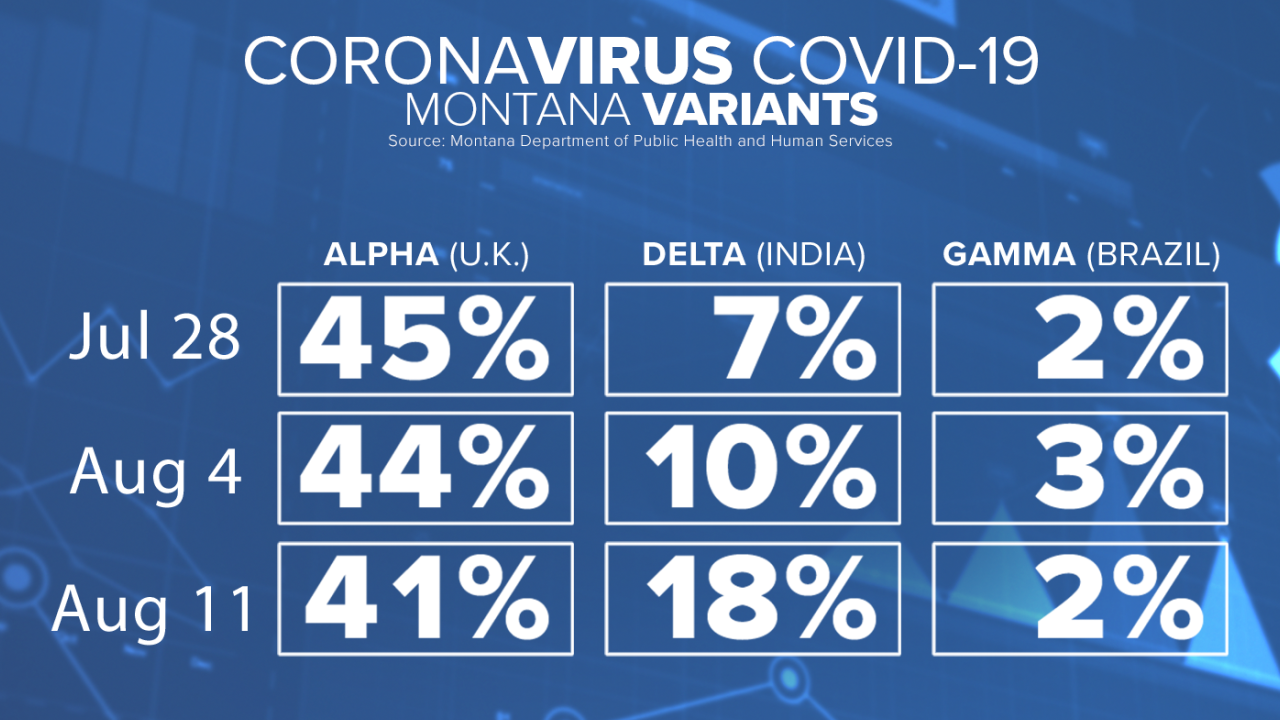HELENA — COVID-19 cases are on the rise in the United States. Montana is no different and, just like the rest of the country, the state is seeing an increase in delta variant cases and hospitalizations of the unvaccinated.
On Monday, the state saw 473 new cases, bring the total active cases to 2,742. Although Montana isn’t anywhere near the height of cases numbers, averaging over 1,200 during the peak of the winter wave, the current data shows the state is in the upswing of another wave.
“When I was looking at the numbers last week we are about at the same level as we were last October,” said Lewis and Clark Public Health (LCPH) Disease Control and Prevention Division Administrator Laurel Riek.
The increase in cases has led to Lewis and Clark Public Health needing to hire back additional staff to keep up with contact tracing.
Montana has been seeing similar daily case numbers as October 2020, with 473 cases reported on August 16. The 7-day average for COVID cases as of August 15 was 283 which is comparable to the last week of September and the first week of October 2020 which saw the daily 7 -day average range from 216-431.
While the alpha variant (U.K.) has seen the highest total reported variant cases in Montana so far, the State says the delta variant (India) is making up ground and has become the dominant strain in recent weeks.
Data from the Montana Department of Public Health and Human Services (DPHHS) had the delta variant representing around 7% of total reported variant cases. By Aug. 11, delta cases had increased to now represent 18% of the total reported variant cases. Just of the Aug. 11 report, the delta variant represented 95% of reported variant cases.

The delta variant has many public health and medical institutions concerned. National data has shown the variant is twice as contagious and has been having a greater impact on younger age groups, with more children, teens and pregnant women needing medical treatment for complications compared to other strains.
“Today (Aug. 16) we have 11 patients hospitalized with complications from COVID. That is the largest number that we have seen at the hospital in months,” said St. Peter’s Health Communications Manager Katie Gallagher. “And it’s not just inpatients seeking services. We have seen a significant increase in testing demand as well as business in our urgent care and emergency department. It really is a systemwide impact.”
During November, the height of the worst wave of the pandemic, the state saw around 1 in every 20 (4.9%) confirmed COVID cases resulting in hospitalization. As of Aug. 11, 1 in 8 (13.5%) confirmed delta variant cases in Montana have resulted in a hospitalization.
“The majority of patients hospitalized due to COVID are still unvaccinated,” explained Gallagher. “That’s what they have in common. It’s not age, it’s not a specific condition, it’s vaccination status for the vast majority of the patients we’re seeing hospitalized.”
One of St. Peter's biggest concerns right now is staffing. During the last wave, staffing difficulties arose as hospital workers were forced to quarantine after positive tests following community exposure.
St. Peters and LCPH say the way to end the pandemic and have the best shot at not ending up in the hospital due to COVID is simply to get vaccinated. The organizations say there is good news on that front as following the increase in COVID cases, public health and medical providers like St. Peter’s have been seeing an increase of interest in getting vaccinated.
The demand was high enough in Lewis and Clark County a drive-thru clinic was held on Saturday, where 95 shots were given out. Another free clinic will be held Tuesday, Aug. 17 from 5-7 p.m. at the East Helena High School parking lot.
“We’re hoping more and more people get vaccinated because that really is the best defense for this pandemic,” said Riek.




